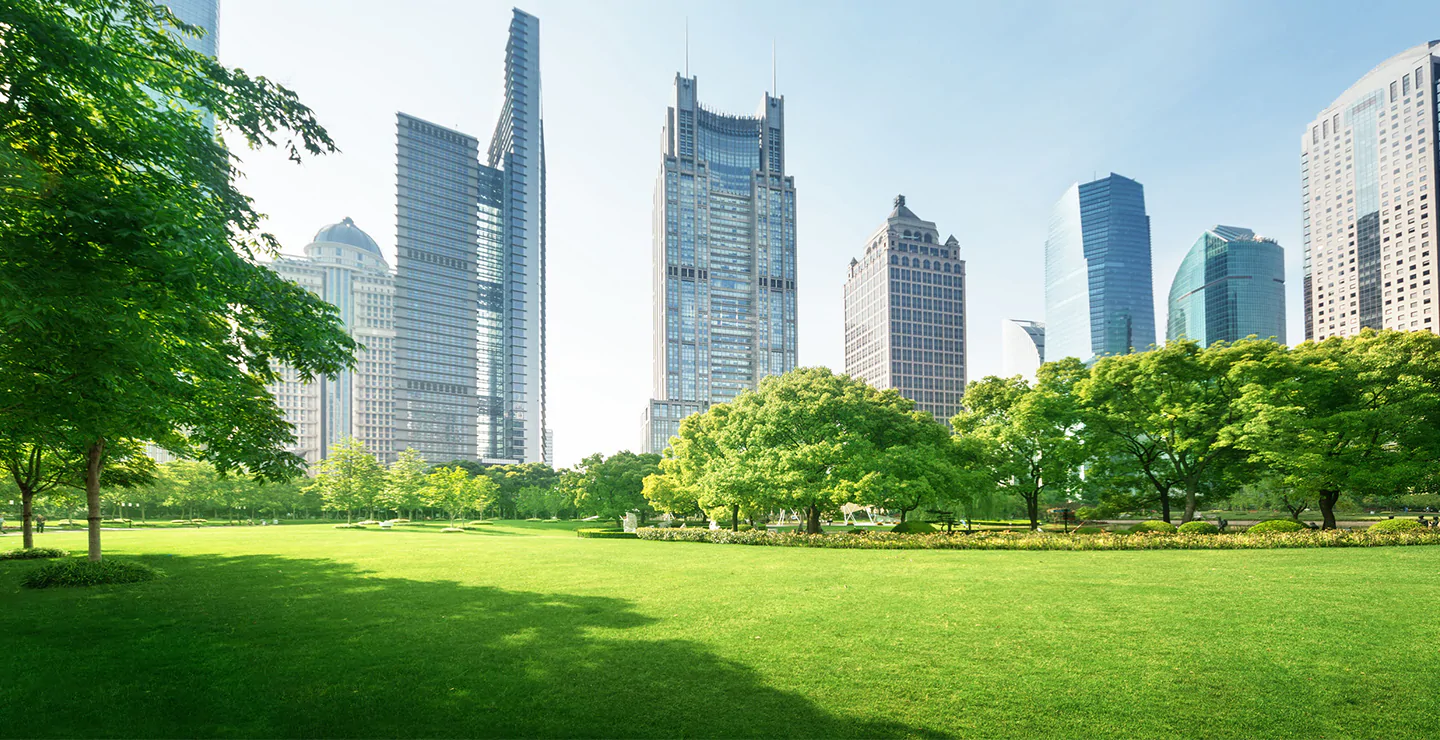Urban planning and sustainability are two themes that are increasingly intertwined today. In a world where urbanization grows at an accelerated pace, the search for urban planning that can guarantee the well-being of citizens and the preservation of the environment is an urgent need.
In this context, the construction of sustainable buildings and the design of planned and sustainable cities are key elements for achieving these goals. Urban planning is fundamental for the organization of cities and the guarantee of quality of life for its inhabitants. The lack of planning can lead to a series of problems, such as increased traffic, lack of public spaces for sports and leisure activities and the concentration of services and commerce in specific areas, while other locations fail to develop and guarantee the facilitated access of citizens to hospitals, schools, markets, among others.
Good urban planning should consider several aspects, such as:
- urban mobility;
- urban infrastructure;
– housing;
- green areas;
- leisure;
- security.
It is necessary to think about the city as a whole, to ensure that the different elements are efficiently integrated and that the city can be enjoyed equitably by all who inhabit it. In addition, it is still necessary to think about the city in order to guarantee the preservation of the environment and the well-being of citizens. This implies thinking about solutions that manage to minimize the environmental impacts caused by urbanization and that can guarantee long-term sustainability.
Among the main strategies for promoting sustainability in cities, the promotion of sustainable urban mobility, the use of renewable energy sources, the proper management of solid waste, the preservation of green areas and the promotion of environmental education policies stand out. .
Constructing Sustainable Buildings
The construction of sustainable buildings is fundamental for sustainable urban planning, as these buildings are designed to minimize the environmental impact and promote the efficient use of natural resources, such as energy, water and raw materials.
Civil construction is one of the human activities that most impact the environment, being responsible for around 30% of Greenhouse Gas (GHG) emissions. In this sense, developing projects that promote sustainability in buildings is essential to minimize this impact and preserve the planet for future generations.
One of the main approaches to sustainability in buildings is energy efficiency. This involves the use of techniques and materials that reduce energy consumption and increase the efficiency of air conditioning, lighting and ventilation systems. Thermal insulation, double glazing, water collection and reuse systems and solar panels are examples of measures that can be adopted to reduce energy consumption and the emission of greenhouse gases.
In addition, the use of sustainable materials is another way to promote sustainability in buildings. Materials such as certified wood, bamboo, ecological bricks, among others, are more sustainable options than conventional materials, which can be highly polluting and harmful to the environment. It is worth mentioning that sustainability in buildings is a concept that involves the entire civil construction chain, from the extraction and production of materials to the disposal of waste. Therefore, it is essential that all those involved in the construction process, from architects and engineers to suppliers and builders, are engaged in promoting sustainability in buildings.
The construction of sustainable buildings is fundamental for sustainable urban planning, as these buildings are designed to minimize the environmental impact and promote the efficient use of natural resources, such as energy, water and raw materials.
Transforming Urban Transport Into a Sustainable System
The adoption of clean transport in cities is one of the main strategies to make urban development more sustainable. This is because transport is responsible for a significant portion of greenhouse gas emissions, air pollution and congestion in cities.
The transition to clean transport can be achieved through various initiatives, such as incentives for the adoption of electric and hybrid vehicles, expansion of low-carbon public transport systems, investments in cycle infrastructure, and incentives for walking and bicycle use. In Brazil, Law 13,724/2018, which institutes the Brazil Bicycle Program, is already pending in the Federal Senate, which aims to improve the general conditions of Brazilian urban mobility, overloaded by the intense flow of motor vehicles. The initiative prioritizes, among other aspects, increasing the construction of bicycle lanes and the marking of cycle lanes and shared (temporary) lanes on the taxiways. But not only that: the text provides for the implementation of low-cost bicycle rental systems in public transport terminals, where it is also intended to install bicycle racks – according to information from the Senado Agency. According to data from the Ministry of Cities, in 2021 Brazil had around 4,000 km of bike paths across the country. However, this number is considered low, since it represents only 0.14% of the country's total road network. In addition, the distribution of bicycle lanes is not uniform, being concentrated mainly in large urban centers such as São Paulo and Rio de Janeiro. There is still a lot of room for the growth of this type of infrastructure in the country, both in terms of extension and quality.
Another important strategy is the expansion of low-carbon public transport systems, such as subways, electric buses and urban trains. These systems are designed to be highly energy efficient and produce much lower emissions than individual transport systems. In addition, the use of these public transport systems can also reduce noise pollution and the need for parking space for private vehicles.
Sustainable Cities Promote Well-Being and Health to the Population
When talking about sustainable cities, one of the main benefits that comes to mind is the promotion of the well-being and health of the population that lives there. In Brazil, according to the Brazilian Institute of Geography and Statistics (IBGE), only 10% of Brazilian cities have green areas in adequate proportion, that is, at least 12 m² of green area per inhabitant. Furthermore, around 35% of Brazilian cities do not have any parks or public green areas. However, studies show that the presence of green areas in urban areas can bring many benefits to the health and well-being of the population. Research indicates that the proximity of green areas is related to a lower incidence of respiratory diseases, improves air quality and can even contribute to the preservation of biodiversity, with the creation of habitats for various animal and plant species.
Green areas can also improve the temperature in cities, creating shaded spaces and reducing the effect of heat islands, common in urban areas with few green areas. Studies show that increasing vegetation cover can reduce temperatures by up to 2°C. Another benefit of green areas is the promotion of physical and leisure activities, contributing to the reduction of sedentary lifestyle and prevention of chronic diseases. According to the Ministry of Health, physical activities in green areas can bring several health benefits, such as reducing the risk of cardiovascular diseases.
Another important factor for the well-being and health of the population is access to healthy and quality food. Sustainable cities promote urban agriculture, encouraging food production in small gardens and backyards in homes and apartments. In addition, the creation of public markets and fairs for local producers also contributes to access to fresh and healthy food.
Thinking Today's Problems and Solving Tomorrow's
Sustainable urban expansion can solve or avoid several environmental and social problems in cities. Among them, we can highlight:
– Reducing the emission of greenhouse gases and combating climate change;
– Preservation and restoration of green areas and natural ecosystems;
– Improvement of air quality and fight against pollution;
– Appropriate management of water resources and combating water scarcity;
– Promotion of the use of renewable energies and reduction of energy consumption;
– Reduction of social inequality and improvement of urban security;
Stimulating the local economy and generating sustainable jobs.
By adopting sustainable urban development practices, cities can guarantee a more balanced and healthy future for all their inhabitants, preserving the environment and promoting the well-being of the population.
Sustainable urban expansion is a challenge for cities, but also a necessity for urban development. The adoption of sustainable practices, such as integrated urban planning, sustainable building construction, renewable energy and clean transport, can ensure that cities grow in a balanced way, preserving the environment and promoting the well-being of the population. In addition, the creation and maintenance of green areas and public parks is essential for promoting the health and quality of life of citizens. Therefore, it is necessary for governments, companies and civil society to work together to implement measures that can guarantee sustainable urban expansion and a healthier and more prosperous future for cities.




